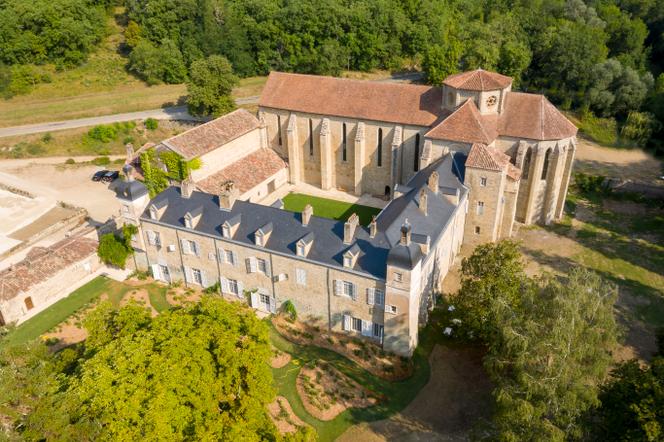


Like all Cistercian abbeys, Beaulieu-en-Rouergue, in southern France, was built away from major roads, nestled in the narrow Seye valley. Hermits settled here around the middle of the 12th century. Construction began the following century for the abbey, a southern Gothic-style church with a single, long and tall nave, a choir topped by a tower and ending in a polygonal apse, the cloister, and adjoining convent buildings. During the French Wars of Religion, Protestant troops destroyed the cloister. The abbey was restored and expanded in the 18th century, but it was sold as national property during the French Revolution.
Other misfortunes followed, not least the disastrous plan by architect Eugène Viollet-le-Duc to dismantle the church and rebuild it in the town of Saint-Antonin-Noble-Val, about 12 kilometers away. Despite opposition from the writer and archaeologist Prosper Mérimée, work began in 1844 with the roof and the nave's framework, but was halted for lack of funds. The buildings then served only agricultural purposes and gradually fell into disrepair.
Nothing would likely remain today if contemporary art had not come to the rescue. In 1960, a Parisian couple bought the ruins, selling a sculpture by Constantin Brancusi to finance the purchase. She was Geneviève Bonnefoi, an art critic. He was Pierre Brache, a business administrator, notably for the Fauchon group. They met in 1943 and began collecting art: first works by Michaux, then paintings from their own era. Renowned artists: Jean Fautrier, Hans Hartung, Simon Hantaï, Jean Dubuffet, Fred Deux. And lesser-known artists who deserve greater recognition: Ida Karskaya, Claude Viseux, Iaroslav Serpan, and Claude Georges.
You have 45.61% of this article left to read. The rest is for subscribers only.
